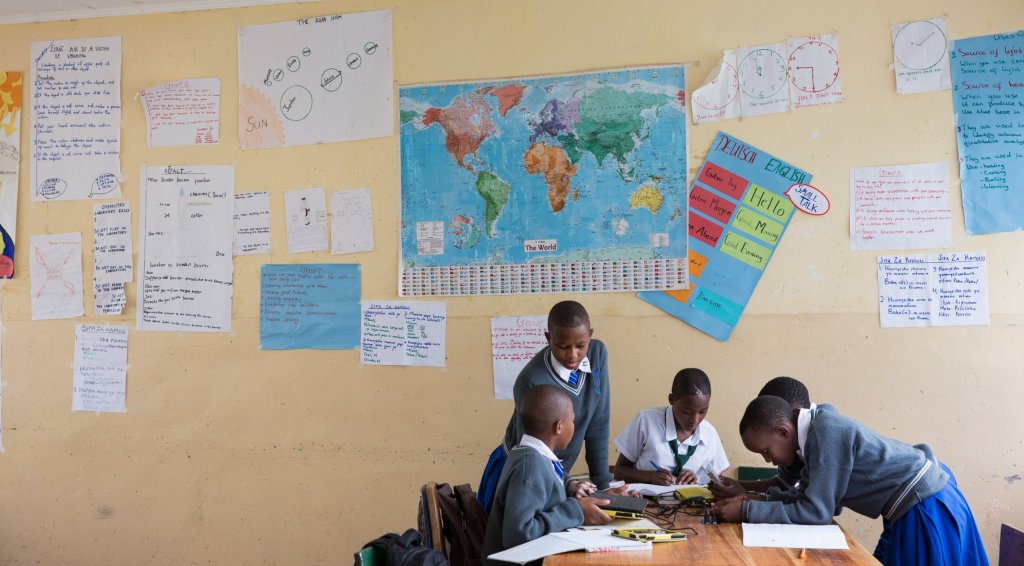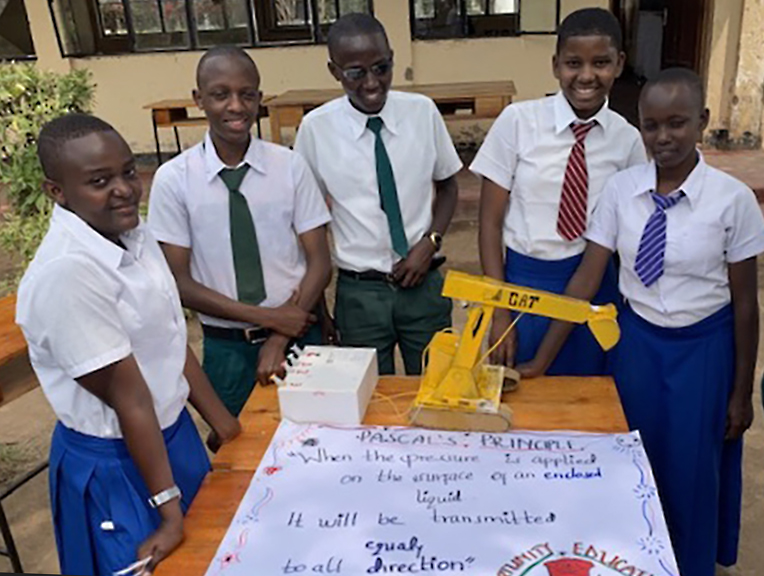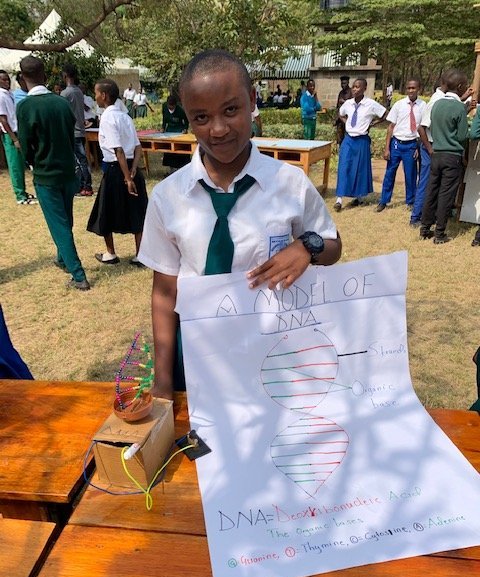Why Making Artefacts is Integral to Learning
Students in secondary schools can demonstrate learning in a variety of ways beyond exams. For students at Quest Forward Schools in Tanzania, one such method is the creation of artefacts.
Artefacts are work products that students make throughout their courses. An artefact can be a written essay, an object constructed from common materials, a photo or video, notes from an interview — a piece of work of any kind that demonstrates thorough understanding and application of a topic.

My colleague, Jolene Zywica, describes how artefacts serve four significant purposes:
- Students gain knowledge and skills by creating, reflecting on, and discussing artefacts with peers and mentors. Creating artefacts involves active and often social learning, and can increase student engagement with the learning process.
- Artefacts are evidence that teachers can use to assess student learning, and are a basis for providing feedback to help students improve and further develop knowledge and skills.
- Small and medium artefacts serve as incremental steps towards a large artefact. These smaller steps make the final project less overwhelming since students are able to see how they have developed the skills and knowledge to complete smaller projects successfully, building toward broader comprehension over time.
- Artefacts serve as documentation of student work, learning, and growth and can be used to communicate abilities and interests across the Quest Forward community and beyond.
In Quest Forward Schools, artefacts often express personal interests or help to achieve a student’s academic, skill, or career goals. They can also demonstrate a student’s work process, often displaying skills such as analysis, time management, critical thinking, and creativity.
Artefacts can be integral to any activity. For instance, a tailor makes clothing. The clothing is an artefact of both the tailoring process and the tailor. Just as a tailor requires understanding, skills, and practice to create clothing, artefacts are often crucial to understanding an academic activity, especially in secondary education.
Over time, artefacts also demonstrate growth: what knowledge and the skills they are gaining as they progress through their education. When creating, students not only deepen their understanding of what they are learning but also gain confidence and skills.
Students enjoy creating artefacts very much. They also delight in sharing their work with others. Artefact exhibitions can help students further develop their skills, and students can benefit from exposure to others’ work and processes.
Mtakuja Secondary School near Moshi recently held a highly successful exhibition of student work. The students displayed their artefacts to their classmates, parents, school board members, and students and teachers from neighbouring primary and secondary schools. The school was also honoured to host two Zonal Quality Assurance Inspectors for the exhibition.
During the exhibition, the Mtakuja students presented and demonstrated what they produced. The artefacts varied and represented student learning from the 9 core subjects taught in Tanzania Secondary Schools: Biology, Chemistry, Physics, Math, English, Kiswahili, History, Geography and Civics.
As an example of an artefact from physics, a student ingeniously constructed a working model of an excavator using cardboard, syringes, tubes, and water. This student effectively demonstrated Pascal’s Principle: a change in pressure applied to an enclosed fluid is transmitted undiminished to all portions of the fluid and to its container walls. Pascal’s Principle is the underlying principle of a hydraulic system.

Other presentations included a DNA model, a model of the solar system, and a traditional hut documenting African history. The students demonstrated ingenuity by using various resources found around their school, many of which were repurposed rubbish.

At Mtakuja Secondary School, Quest Forward Learning students maintain an artefact portfolio throughout secondary school. The portfolios give the students a record of their work, learning, and changes in skills and interests over time.
Producing artefacts is central to the learning process. However, demonstrating learning outcomes and learning from each other has great value as well. Mtakuja’s recent exhibition was a celebration and affirmation of student learning. It put students at the centre stage as they shared the processes and products of their learning. The entire community took pride in seeing firsthand how these students are gaining the mindset, habits, and skills to succeed in life.